The Hemhem Crown, a symbol shrouded in the mystique of ancient Egyptian mythology, stands as a testament to the rich cultural and spiritual tapestry of Egypt’s past. This ornate artifact, often depicted in hieroglyphs and temple carvings, represents more than mere regalia; it embodies the divine power and authority vested in the gods and pharaohs of old. The purpose of this article is to peel back the layers of time, offering readers an insightful journey into the heart of Egyptian mythology. Through a comprehensive exploration of the Hemhem Crown, we aim to illuminate its historical significance, mythological importance, and the enduring legacy that continues to fascinate scholars and enthusiasts alike. This exploration is not just a delve into history, but a voyage to understand the profound impact of symbolism in one of the world’s most enigmatic civilizations.
| Origin | Ancient Egyptian Art and Symbolism |
| Classification | Crown or Headdress |
| Appearance | Elaborate and tall double-crown adorned with ostrich feathers and sun disks |
| Significance | Symbolic of the ruler’s dominion over Upper and Lower Egypt |
| Usage | Worn by pharaohs in various ancient Egyptian ceremonies and representations |
| Mythological Role | Associated with the pharaoh’s power and authority in ancient Egypt |
1. The Origin of the Hemhem Crown
Historical and Mythological Beginnings
The Hemhem Crown, a resplendent symbol in ancient Egypt, finds its roots deeply entrenched in the nation’s history and mythology. During the reign of Pharaoh Akhenaten, the crown originally appeared in texts and artifacts from the New Kingdom era. It was depicted as a towering, ornate piece often associated with the sun god Ra. The Amarna period relics vividly illustrate this association as they show the crown adorning deities in solar worship.
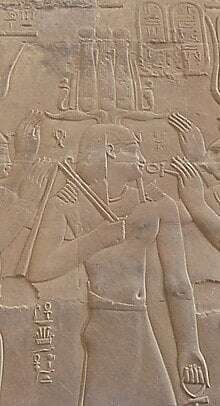
Archaeological Insights
Archaeological excavations have provided invaluable insights into the Hemhem Crown’s evolution. Excavated temple reliefs, particularly in Karnak and Luxor, depict the crown in various ceremonial contexts, suggesting its role in royal and religious ceremonies. These findings, coupled with references in the Pyramid Texts and Coffin Texts, establish a clear chronological and cultural framework for its use.
Symbolism and Cultural Significance
In ancient Egyptian culture, the Hemhem Crown was more than an adornment; it was a potent symbol of power, divine authority, and transformation. Often seen in conjunction with other crowns, like the Deshret (red crown of Lower Egypt) or the Hedjet (white crown of Upper Egypt), it signified the pharaoh’s elevated status as a deity among men. Its intricate design, featuring elements like ram horns and tall plumes, symbolized fertility, creation, and the sun’s life-giving energy, key elements in Egyptian cosmology.
2. Descriptive Analysis of the Hemhem Crown
Physical Appearance
The Hemhem Crown, a marvel of ancient Egyptian craftsmanship, presents a striking and complex design. Characteristically, it features a tall, cylindrical core, often encircled by multiple layers of ornamental elements. At its base, the crown typically includes a set of ram’s horns, symbolizing fertility and power. Rising from this base are several tall, curved plumes or feathers, which may represent the physical manifestation of divine light and energy, echoing the rays of the sun.
Artistic Representations and Variations
Artistically, the Hemhem Crown is depicted with varying degrees of complexity across different periods and contexts. In some representations, especially those found in temple carvings and royal tombs, the crown includes additional embellishments like sun disks or cobras, each adding layers of symbolic meaning. The sun disk, often positioned at the crown’s apex, signifies the pharaoh’s connection to Ra, the sun god, while the cobra, a symbol of divine authority and protection, reinforces the pharaoh’s role as a protector of the land.
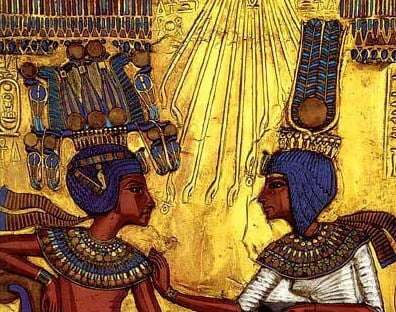
The variations of the Hemhem Crown seen in different artistic depictions underscore the dynamism of Egyptian art and the evolving nature of its religious symbolism. From simpler forms to more elaborate renditions, each version of the crown offers a glimpse into the aesthetic preferences and theological inclinations of the period in which it was crafted.
3. The Hemhem Crown in Egyptian Mythology
Role in Myths and Stories
The Hemhem Crown, deeply intertwined with Egyptian mythology, plays a pivotal role in various legends and narratives. It is most notably linked to the story of the solar deity Ra, embodying his immense power and authority. In myths, the crown often appears in critical moments of divine intervention or during significant celestial events, symbolizing the god’s supremacy and the cyclical nature of life and rebirth in Egyptian cosmology.
Associations with Gods and Pharaohs
Prominently, the crown is associated with Ra, but it also appears in conjunction with other deities like Amun, a major god of wind and air, and Osiris, the god of the afterlife. In these contexts, the Hemhem Crown signifies the amalgamation of different divine aspects, representing a unification of powers. Among pharaohs, the crown is particularly linked to Akhenaten, who, in his revolutionary religious reforms, emphasized the worship of the Aten, the sun disk, thereby aligning himself closely with solar deities.
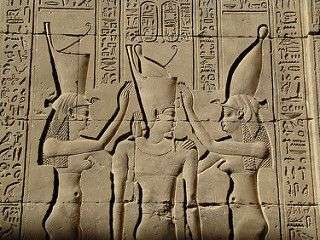
Usage in Rituals and Ceremonies
Historical evidence, derived from temple inscriptions and ancient manuscripts, suggests that the Hemhem Crown was used in a variety of religious ceremonies and state functions. During these events, the pharaoh, adorned with the crown, would perform rituals symbolizing his divine right to rule and his responsibility to maintain cosmic order. The crown’s presence in these rituals reinforced the pharaoh’s status as a god-king and a mediator between the divine and earthly realms.
4. Comparative Mythological Study
Cross-Cultural Comparisons
The Hemhem Crown, while unique in its Egyptian context, shares several thematic and symbolic parallels with artifacts and symbols from other ancient cultures. A notable comparison can be made with the Greek laurel wreath, symbolizing victory and divine favor, particularly associated with Apollo, the god of the sun, music, and poetry. Like the Hemhem Crown, the laurel wreath was more than a decorative item; it was imbued with deep cultural and religious significance.
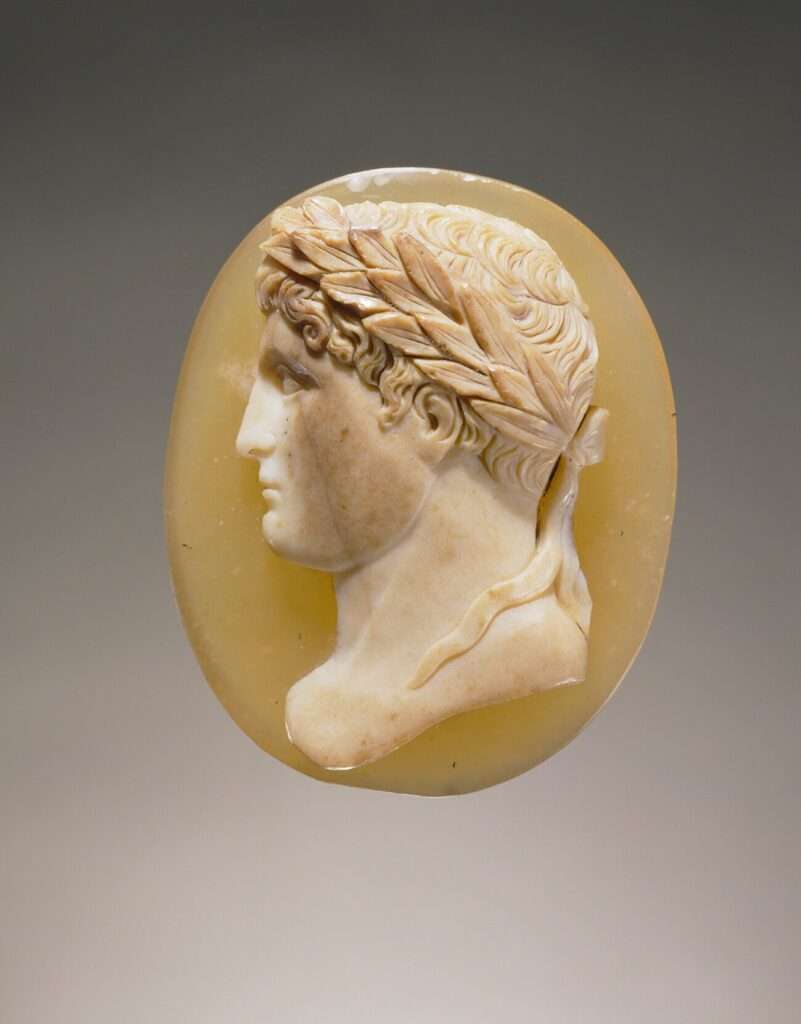
Shared Themes in World Mythology
In examining these cultural artifacts, a common theme emerges: the use of headgear as a symbol of divine connection and authority. In Norse mythology, Odin often wears a distinctive hat that symbolizes wisdom and sovereignty, while in Hindu mythology, many deities don ornate crowns that signify their particular powers and attributes.
Influence and Convergence
These comparisons reveal not just isolated cultural practices, but a broader human inclination to use symbols, like crowns or headgear, to denote power, divinity, and protection. While each culture developed its unique interpretations and styles, the underlying concept of adorning leaders or deities with special headwear seems to be a universal phenomenon. This convergence suggests a shared human experience in attributing significance to objects as carriers of meaning and power.
5. The Hemhem Crown’s Legacy in Modern Times
Influence on Modern Culture, Art, and Literature
The Hemhem Crown’s legacy extends far beyond the sands of ancient Egypt, influencing modern culture, art, and literature. Contemporary artists frequently depict the crown as a symbol that captures the fascination of both artists and audiences, representing ancient wisdom and power. In literature, particularly in historical fiction and works inspired by mythology, writers often reference the Hemhem Crown as a symbol of divine authority and ancient majesty. Its representation in these mediums not only reflects an enduring interest in Egyptian mythology but also underscores the crown’s symbolic power in the collective imagination.
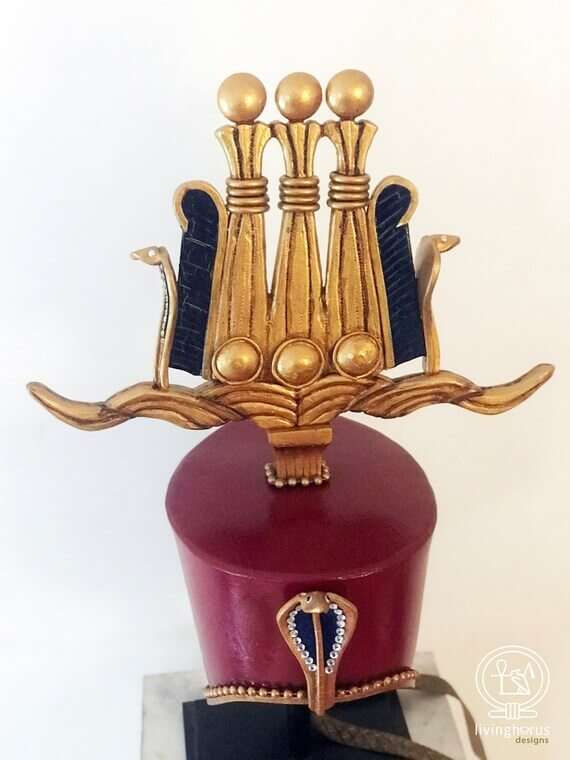
Recent Archaeological Discoveries and Scholarly Research
In recent years, archaeological discoveries and academic research have shed new light on the Hemhem Crown. Excavations in historical sites like Thebes and Amarna have uncovered artifacts and carvings that provide deeper insights into the crown’s use and significance. Scholarly research, particularly in the fields of Egyptology and anthropology, continues to explore the crown’s role in religious and political contexts, offering new interpretations and understanding of its place in Egyptian history.
These ongoing explorations and discoveries keep the legacy of the Hemhem Crown alive, demonstrating its continued relevance and fascination in the modern world. The crown’s enduring presence in academic discourse and popular culture alike speaks to its timeless appeal and the universal allure of ancient Egypt’s mysteries.
6. Conclusion
The Hemhem Crown, an emblem of ancient Egyptian civilization, stands as a symbol of divine power and cultural richness. From its origins in the pantheon of Egyptian gods and pharaohs, through its intricate design and symbolic complexity, to its roles in mythology and ritualistic ceremonies, the crown embodies the depth of ancient Egyptian spirituality and authority. Its comparison with similar cultural artifacts across the world highlights a shared human experience in symbolizing power and divinity. Today, the Hemhem Crown continues to captivate scholars, artists, and enthusiasts, bridging the ancient past with the modern world. This exploration not only unveils the crown’s historical significance but also underscores its enduring allure, maintaining its position as a fascinating and enigmatic icon in both historical and contemporary narratives.
